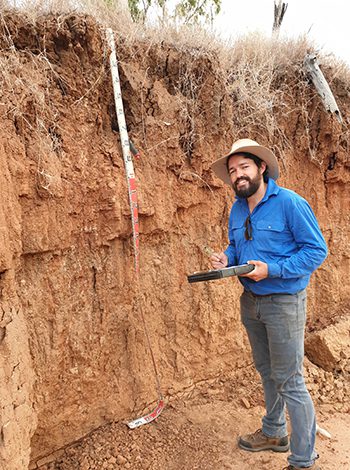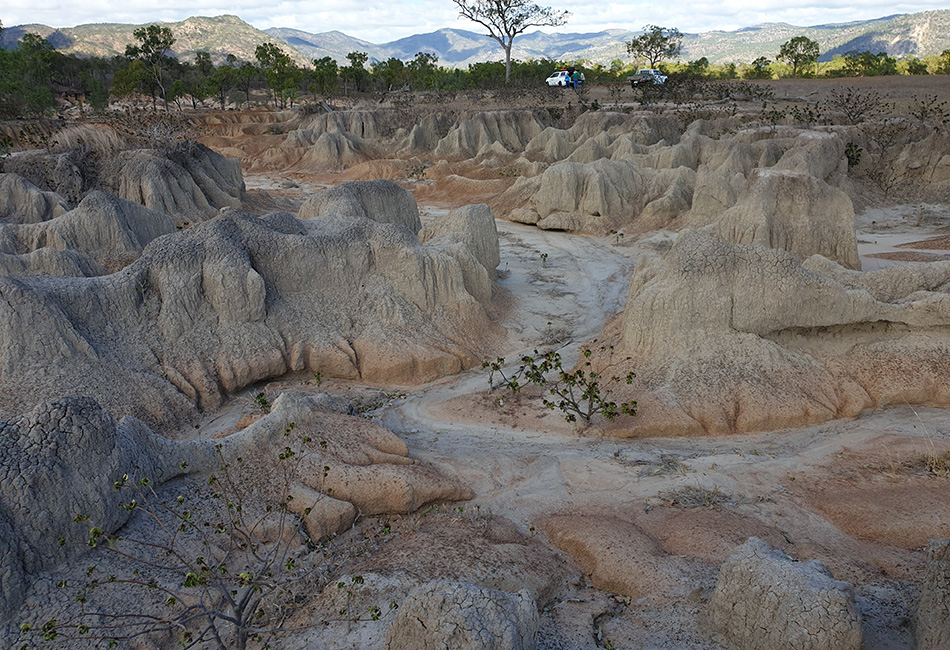The Bowen Broken Bogie catchment is a “hotspot” for delivering sediment in runoff water that flows into the Great Barrier Reef lagoon.
Aiming to stop soil becoming sediment
The aim of the LDC project is to stop shifting soils and water runoff at the source. It is doing this by supporting BBB landholders to undertake a wide range of activities ranging from improving land management practices to treating gullies.
These actions, in time, are expected to help keep soil on land, maximise pasture cover and reduce sediment runoff into local waterways. Soil types in the BBB are particularly susceptible to erosion — highly-dispersive and unstable.

NQ Dry Tropics Senior Grazing Field Officer Joe O’Reagain surveying gullies.
Mapping and modelling of the catchment indicates there are certain soils and sub-catchments more prone to erosion than others. It has been critical to trace the origin of suspended sediment so specific actions can be taken to tackle erosion, keep soil on the land and improve water quality.
That is why scientists are involved with LDC.
For more than 10 years, scientists have been characterising and tracing the origin and fate of fine sediment delivered from rivers, using samples collected in flood plumes and during resuspension events. This includes researching sediment characterisation and tracing from the BBB catchment to the reef.
This includes analysing data collected by the LDC Community Water Quality Monitoring Group. For further information check out the water sampling tab (below).
Water sampling
Gully prioritisation
Work thus far
What’s next?
The Challenge

